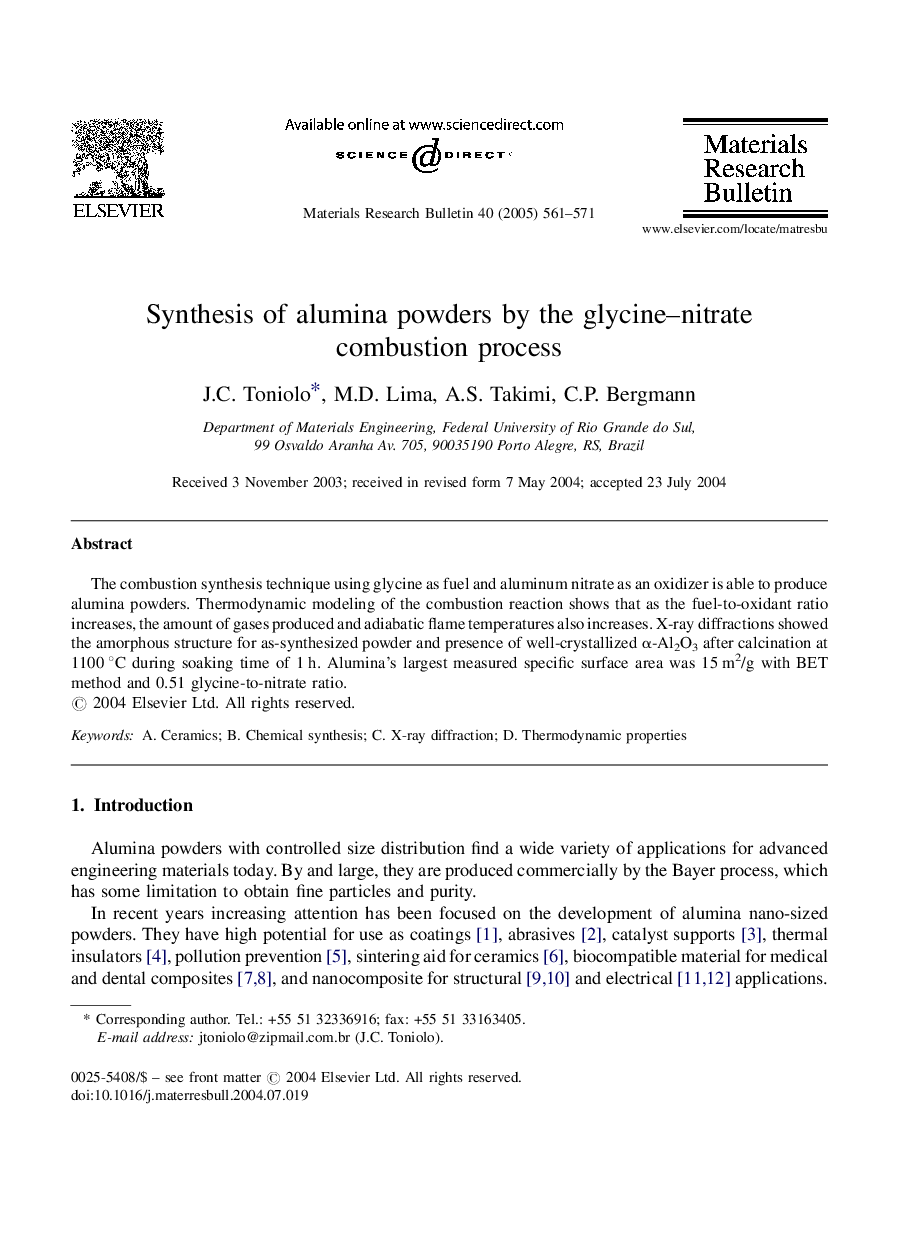| Article ID | Journal | Published Year | Pages | File Type |
|---|---|---|---|---|
| 10632122 | Materials Research Bulletin | 2005 | 11 Pages |
Abstract
The combustion synthesis technique using glycine as fuel and aluminum nitrate as an oxidizer is able to produce alumina powders. Thermodynamic modeling of the combustion reaction shows that as the fuel-to-oxidant ratio increases, the amount of gases produced and adiabatic flame temperatures also increases. X-ray diffractions showed the amorphous structure for as-synthesized powder and presence of well-crystallized α-Al2O3 after calcination at 1100 °C during soaking time of 1 h. Alumina's largest measured specific surface area was 15 m2/g with BET method and 0.51 glycine-to-nitrate ratio.
Related Topics
Physical Sciences and Engineering
Materials Science
Ceramics and Composites
Authors
J.C. Toniolo, M.D. Lima, A.S. Takimi, C.P. Bergmann,
